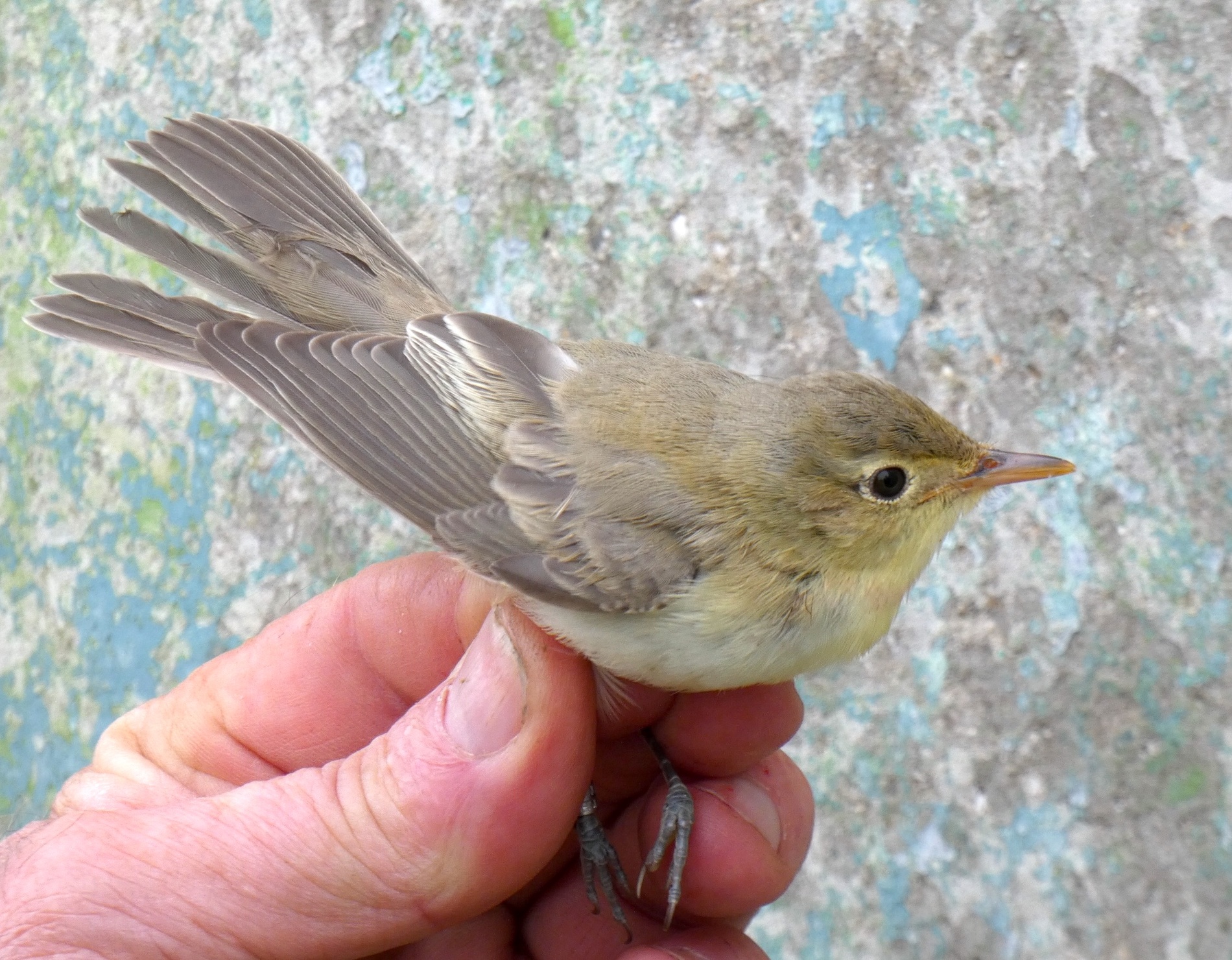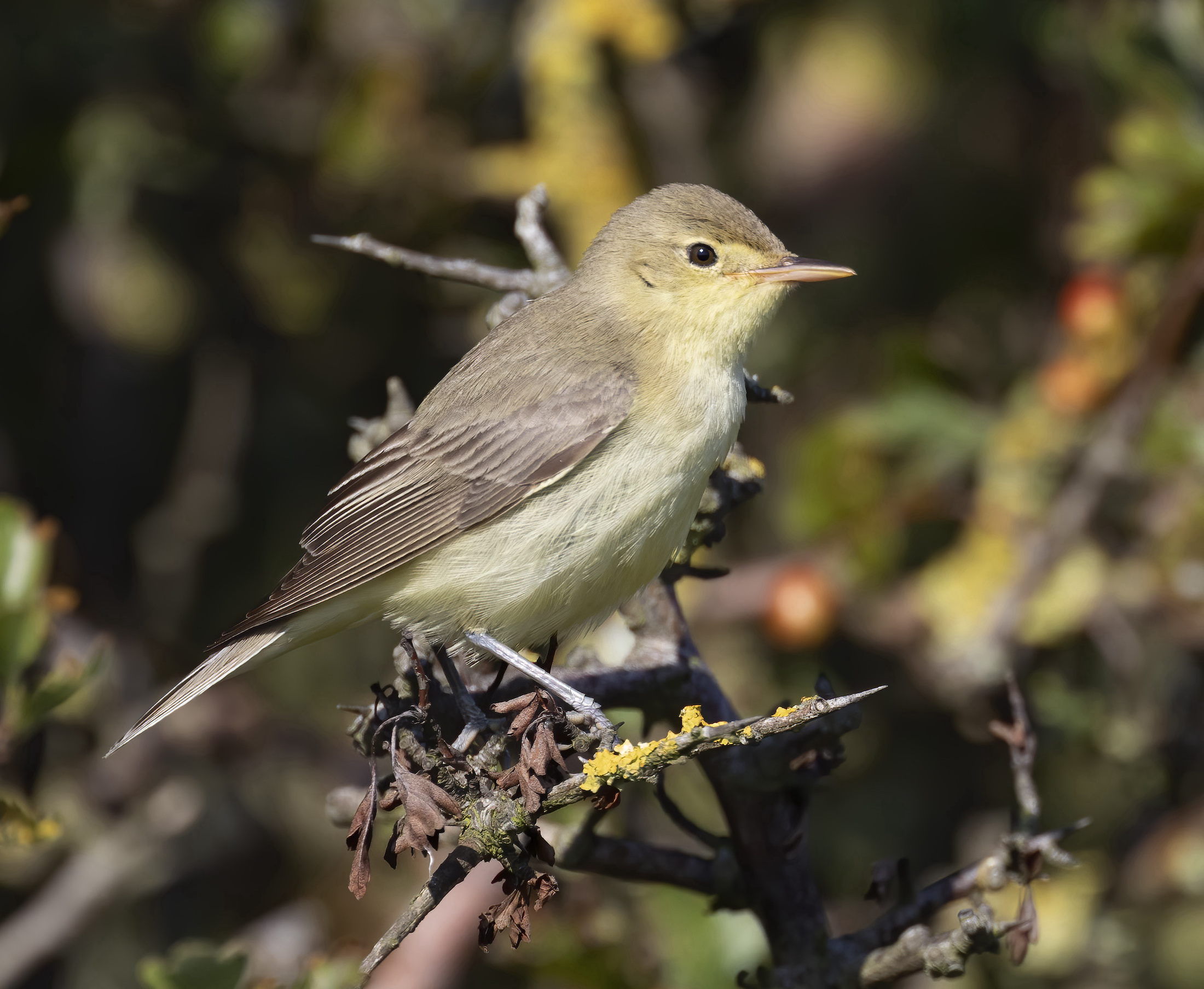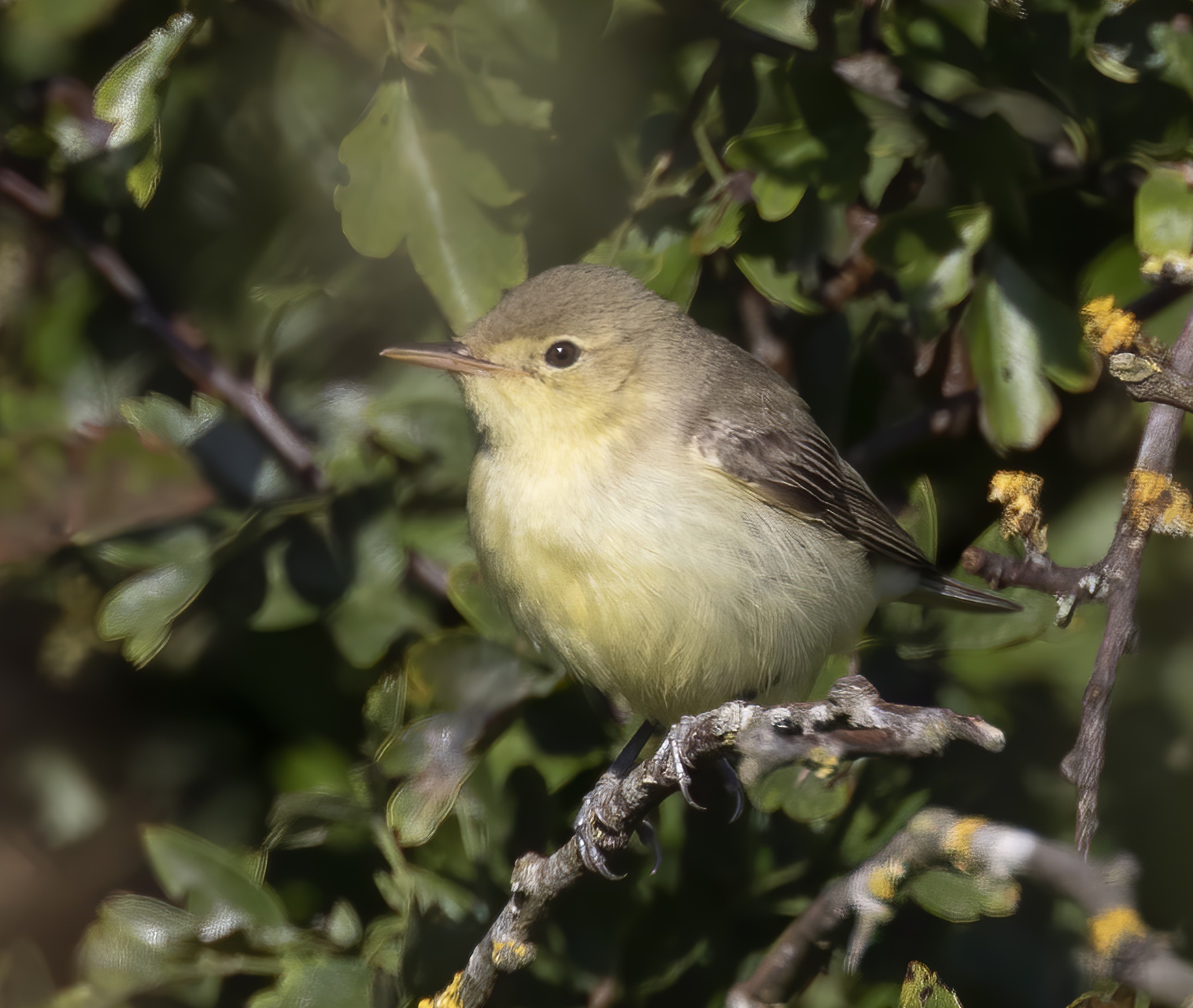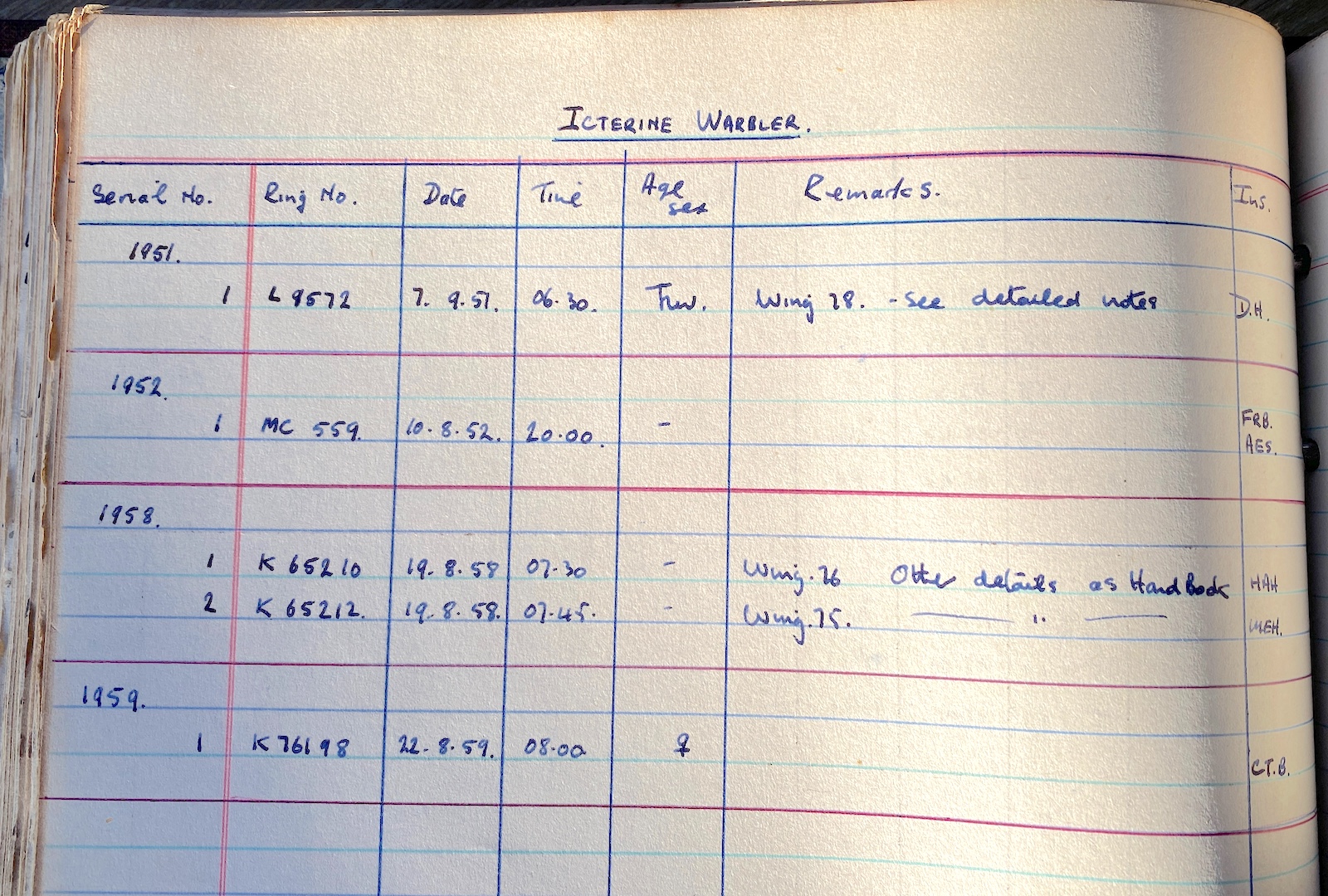Icterine Warbler Hippolais icterina
Very scarce and declining coastal passage migrant mainly August-October, recent increase in spring records.



Icterine Warblers: left, Gibraltar Point August 24th 2011 (George Gregory); centre and right, Donna Nook September 1st 2020 (Graham Catley).
Yet another county first that was recorded after being shot at North Cotes on September 4th, 1922 with the second not until 1951. Spring birds, which are in the minority, arrive late May-June and autumn birds from the first week of August with most arriving in the last 7-10 days of August and the first three weeks of September. Some of the influxes which occurred in the 1970s are unbelievable compared to events nowadays. For example, in autumn 1977 around 20 were reported, allowing for birds staying for more than one day, all at coastal sites, with up to six at Donna Nook, four at Gibraltar Point and 1-2 at Anderby, Saltfleet, and Theddlethorpe. In total there have been around 120 records up to 1990. Since then the species fortunes have declined and there was only an average of 1-4 per year during the 2000s. There were none 2000-2001 and the first birds of the new millennium were in 2002 (4) and included an over-wintering bird at Donna Nook, September 4th-December 31st. There were singles 2005-2007, followed by eight in 2008 which included an influx on May 28th with five on the coast and another singing male inland on June 5th. Since then, 2009-2019 there have been just 1-2 each year apart from 2017 when there were none. Most were seen in 2013 with a singing male in June at Gibraltar Point NNR and six in the autumn. It is interesting to note the increased number of spring birds: just one during 1951-1976, four during 1977-1999 and 12 during 2002-2019.
The two sites at which most birds were found were Donna Nook (58 records) and Gibraltar Point (46 records, 57 birds). Most have been on the coast, but one was a short way inland at Skidbrooke in September 1988 and two much further inland with one trapped at Hemswell June 20th, 1970 and singing males at Crowle Moors June 5th, 2008 and at Swanpool, Lincoln on June 11th, 2019.
Finder’s report: Icterine Warbler at Gibraltar Point NNR, August 19th, 1958.
by H. Hems and C. T. Beverley.
Note: this brief account is taken from the original Rarities Committee submission and is the earliest record submission that we have for this species. The RC interpreted the submission as meaning that five occurred together, two of which were trapped. In Lorand and Atkin (1989) they take more or less the same view, saying that the record was of five or six birds. There were around 22 records in 1958, most of them (15) being trapped and ringed. The RC also observed that there is a remarkable ‘drift shadow’ effect to be seen in autumn records, and that a yellow Hippolais on the east coast is almost certain to be an Icterine, while one in the Irish Sea is only a little less likely to be a Melodious. Icterine Warbler was last considered by the RC (BBRC) in 1962.
Circumstances and description
At 06.30 hr. a party of 5 birds with a small number of drift migrants. They resembled large Willow Warblers and at first sight were taken for Wood Warblers. In the hand they closely resembled Reed Warbler both in size and appearance. Wing formula and colour quickly established both as Icterines. Back, wings, and tail were olive green, belly yellowish-white, by no means as yellow as the Handbook illustration. Both birds were identified as birds of the year. The outstanding diagnostic feature was the pale, leaden-coloured legs. They remained for two days, retrapped several times. Nothing was seen of the rest of the part, which may have moved through on the initial drive.
An image of the ringing details taken from the archive at Gibraltar Point, August 1958 is seen below. Whether 'a party of five birds..' was present is impossible to verify but given their regular autumn occurrences in that era, and in good numbers, it is possible. The ringing log supports the presence of at least two which were trapped and ringed. Oh for some photographs!

(Updated with reference to the new Birds of Lincolnshire (2021) November 2022; content added to April 2024)

